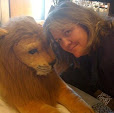TeresaAF from Elegant Extracts made an interesting comment on my post about the similarities between P&P and N&S with regards to the heroine softening towards the hero when she sees him in his native habitat--she related this to the scene in Miss Austen Regrets "where Dr. Haden remarks that Elizabeth Bennet only realizes she loves Mr. Darcy after she has seen how big his house is."
Fresh from that comment, I was proof listening to portion 2 of Gaskell's The Grey Woman, which I am recording for LibriVox, and I was struck by another aspect of this man/house characterization. In The Grey Woman, the heroine, Anna, becomes a prisoner in her husband's castle just as she becomes a prisoner in her marriage. She is isolated from her family, forbidden to enter parts of the castle, and spied upon by the servants. In fact, she says at one point that "I have sometimes fancied since that the flower-garden, to which the only access from the castle was through his rooms, was designed in order to give me exercise and employment under his own eye."
Likewise in Sylvia's Lovers, Gaskell describes Sylvia as feeling as if she is a prisoner in her husband's house. She, of course, is imprisoned by her marriage, which not only prevents her from marrying Kinraid when he returns for her but from living the rural life she has loved.
In all four works, the heroine first sees the main man (I can hardly call Monsieur de la Tourelle or Philip Hepburn "heroes") for what he truly is when he is in his own home, and that home reflects his character.
In P&P and N&S, the heroine softens toward the stern hero when she sees him at home. In The Grey Woman and Sylvia's Lovers, the heroine first starts hardening towards her husband after she sees his house, and how it represents him and their marriage.
In The Grey Woman, Anna is fearful of the castle from the outset and increasingly her eyes are opened to the fact that M. de la Tourelle is a hard, cruel, murderous man and not the effete charmer who wooed her; her husband's castle is made of rock; it's massive, mysterious, and threatening. Even the flower garden has an ulterior purpose.
In Sylvia's Lovers, Sylvia comes to understand that Philip is selfish, deceitful, and weak after Kinraid returns, but from her wedding day, long before Kinraid returned, she hated the confines and stale air of Philip's town house and longed for the fresh air, solitude, and freedom of the farm she left behind.

What a good subject to delve more deeply into: houses and husbands. I have been looking for a course of reading for the fall. This just might be the thing. I can think of one or two books I could read (or re-read), like The Buccaneers, which is a good example of women trapped by or in their husband's houses or one of the Forsyte Saga books, an excellent example of the jailer/husband. Thanks for the idea.
ReplyDeleteGlad to be of service :) I've been finding that I like reading projects like the one you described more than random reading. Maybe I'm getting more analytical as I age...
ReplyDeleteI've only seen The Buccaneers, never read it, though it's on the shelf and I do like Wharton a lot.